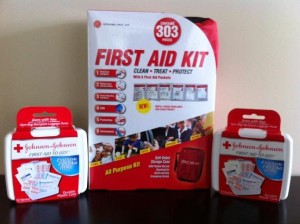Soft tissue injuries involving the skin are some of the most common situations a first aider

may encounter. Before you attend a first aid training course, it would help if you have an overview of what the skin is. Here is a brief discussion about the skin.
The skin is the most obvious soft tissue of the body. Many people do not think that skin is a body organ, but it is. As a matter of fact, it is the largest body organ that plays major functions that include:
- Protection – the skin is the body’s first line of defense that serves as barrier against debris, microorganism, and unwanted substances. It protects underlying organs and tissues from the external environment. This helps ensure proper chemical balance of body tissues and body fluids.
- Temperature regulation – the skin contains a network of blood vessels that can dilate to supply more blood to the skin, allowing heat regulation. On the other hand, if the body needs to conserve heat, the blood vessels constrict to contain body heat. The skin contains sweat glands that produce perspiration, which help cool the body by increasing evaporation. The fat layer of the skin provides added insulation for the body.
- Excretion – excess water, salts, and carbon dioxide can all be released through the skin.
- Shock absorption – the skin, particularly the fat layer, helps protect the underlying organs from sudden impact or pressures.
The outer layer of the skin is known as the epidermis. It is made of four layers except the skin of the soles of the feet and the hands, which both have five layers. Dead skin cells compose the outermost layer of the skin. These cells can be sloughed off or rubbed off and are eventually replaced. The deeper layers contain the pigment granules and other living cells. The innermost layer is comprised of rapidly dividing and growing cells that replace the dead cells of the outer layers.
The epidermis does not contain blood cells. Usually, injuries to this layer do not lead serious problems, although some cases of burns and exposure to cold may lead to problems.
Lying beneath the epidermis is the dermis. This layer of the skin contains a rich network of blood vessels, nerves, and other specialized skin structures such as hair follicles, sebaceous glands, and sweat glands. There are also specialized nerve endings in the dermal layer, which are responsible for the sense of heat, cold, touch, and pain. This is why you need an idea about standard first aid to keep your skin healthy and silky.
Any break into the dermis poses possible contamination from the elements of the outside world. Depending on the body part affected and severity of the injury, there may be profuse bleeding, infection and intense pain.
The subcutaneous layers or fat layers are the deepest part of the skin. It provides insulation and serves as shock absorber. Injuries that affect the subcutaneous layers may result in bleeding, infection and pain.
